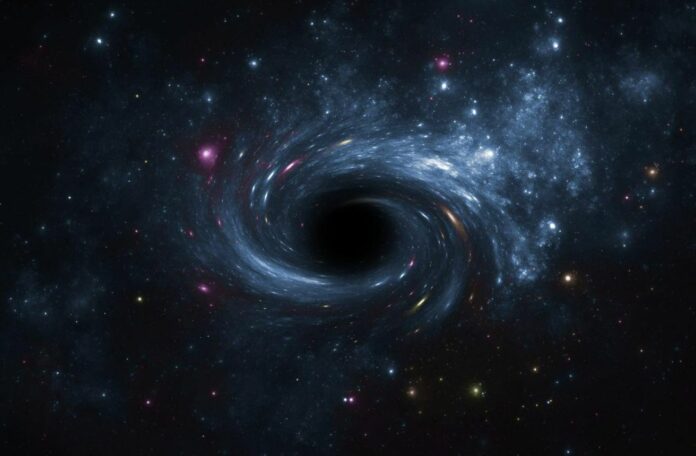What’s Eating the Universe? Apparently Not as Many Black Holes as We Thought, Says James Webb Data
Each galaxy out there, our Milky Way included, harbors a colossal secret at its core: a supermassive black hole. Yet, even though these astronomical behemoths seem ubiquitous, scientists are still grappling with the question of how these black holes came into being and achieved their massive proportions.
Groundbreaking data from NASA’s James Webb Space Telescope (JWST) now offers a transformative viewpoint on supermassive black holes’ development. Recent findings indicate that there might be fewer active, rapidly expanding black holes than had been previously estimated.
The research is awaiting peer review but is currently accessible on the preprint server arXiv.
Black holes in their ‘adolescent’ phase are known to consume surrounding material at an accelerated rate, making them visible to us as bright entities known as active galactic nuclei (AGN). The prevailing consensus is that the supermassive black hole at the center of our Milky Way has long outgrown its active phase. Most black holes reached their peak growth between 7 and 11 billion years ago.
For this latest study, the research team employed JWST’s advanced capabilities to search for black holes in their most active period, observing a segment of the universe with unparalleled precision.
They studied about 400 galaxies located billions of light-years away, which essentially allowed them to look back in time to witness these galaxies during their key growth phases.
Allison Kirkpatrick, the study’s lead author and an astronomer at the University of Kansas, explained the significance of the new observations: “Until now, we were only able to see the most actively growing and biggest supermassive black holes.
“It would be like aliens trying to piece together what the average human can do but only studying Olympic athletes. Now, with JWST, we have our first look at the population of ‘normal’ galaxies in the distant past.”
It was previously assumed that even ‘average’ black holes, like the one anchoring the Milky Way, would display traces of rapid growth given the fast-developing AGNs previously observed.
However, JWST’s increased sensitivity failed to uncover a substantial number of active, adolescent AGNs. The actual number of such black holes is much smaller than earlier approximations had indicated.
Kirkpatrick elaborated that this could mean our Milky Way’s black hole might never have been especially active in the past, based on what they observed in other average galaxies.
The next chapter in this research will involve extending the scope of the study. While 400 galaxies might seem like a large number, it’s only a small fraction of the countless galaxies populating the universe.
Kirkpatrick aims to survey thousands of galaxies in her forthcoming research, striving to obtain a clearer understanding of how smaller galaxies develop their black holes and eventually become the familiar galaxies we recognize today.
Image Credit: Shutterstock
